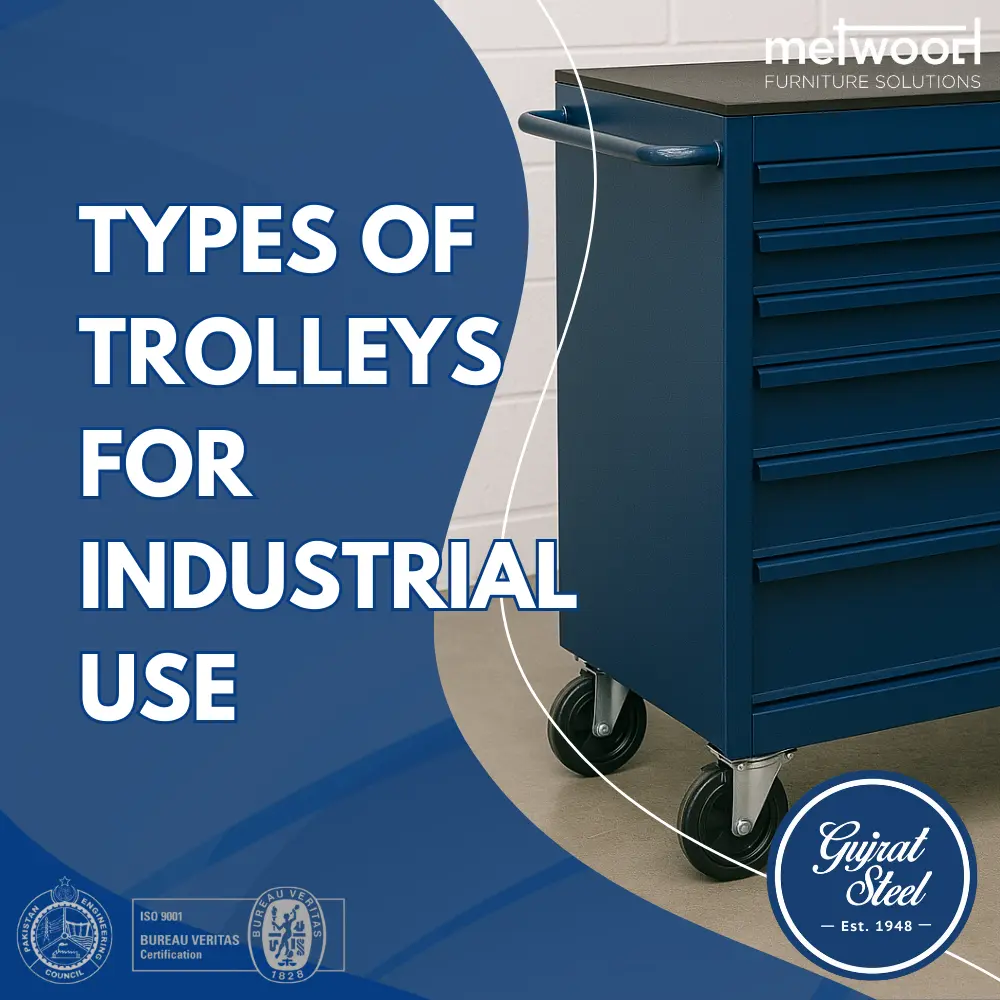Industrial trolleys? They’re tough carts built to move stuff in places like warehouses or factories. Think platform trolleys, hand trucks, shelf carts, cage types, tool movers, pallet jacks, and many more made for specific jobs.
Key Takeaways
- Must-Have Movers: Trolleys are super important for moving materials safely and quickly at work.
- Lots of Flavors: There isn’t just one kind; many are built for special tasks.
- Common Ones: You’ll often see flat platform types, upright hand trucks, carts with shelves, trolleys with cages, and pallet movers.
- Not for Groceries: These are heavy-duty, not like the carts at the store.
- Pick Smart: Choosing the right trolley for the job makes work safer and faster. Think about what you’re moving!
Table of Contents
Introduction
Ever been inside a busy warehouse or a factory? You see those carts everywhere, right? Rolling around, carrying all sorts of stuff. We call them trolleys. Now, these aren’t the flimsy things you use for shopping. Industrial trolleys are built tough. They’re made to haul materials, parts, tools, finished products – whatever needs moving – from one spot to another. They’re super important for keeping things running smoothly and keeping workers safe. But here’s the thing: “trolley” covers a lot of ground! There are tons of different designs, each made for a certain kind of job.
Knowing about these different types of trolleys helps big time if you need to buy some for your workplace, want things to run better, or just need the right tool for the task. Let’s check out the main kinds you’ll find in industrial places.

What Makes a Trolley “Industrial” Grade?
So, what’s the difference between one of these work trolleys and, say, a simple office cart? Industrial ones are built different:
- Built Tough: They’re usually made from strong stuff, mostly steel. They need to handle getting banged around and carrying heavy things day after day.
- Carry Heavy Loads: These things are meant to haul serious weight. Some might carry a couple hundred pounds, others can handle thousands. Depends on the type.
- Made for the Job: Each design usually focuses on a specific task – moving big flat things, keeping small parts contained, lifting heavy drums, getting up stairs, etc.
- Strong Wheels: The wheels (called casters) are heavy-duty too. They need to support the load, roll on different floors (smooth concrete, maybe rougher areas), and turn easily.
Let’s Look at Different Trolley Types
Okay, the world of industrial trolleys has lots of variety. Here are some key types you’ll see often:
1. Platform Trolleys (Also called Flatbed or Cargo Trolleys)
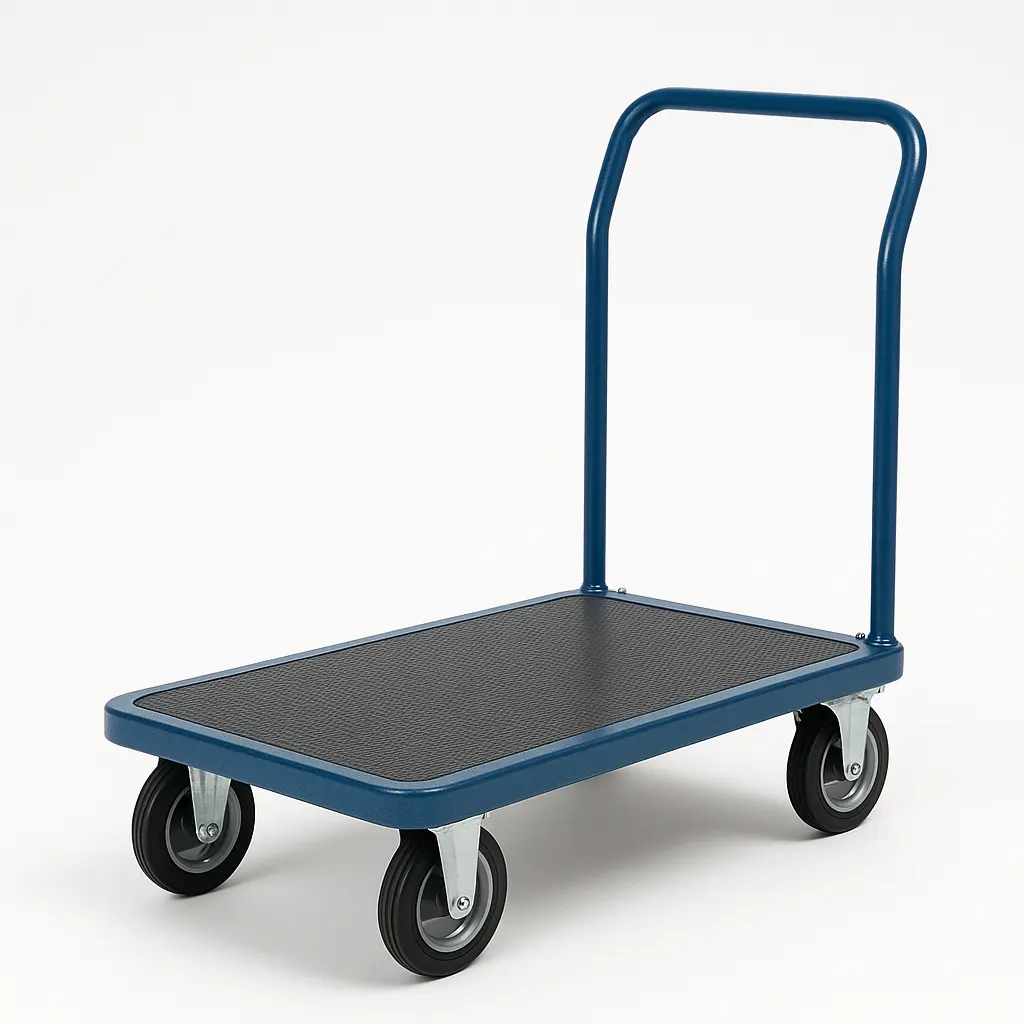
Imagine a flat deck on wheels. That’s pretty much it! Usually made of strong steel, sometimes with a grippy surface on top. There’s typically a handle at one end (sometimes both) to push or pull it.
- What they move: Great for boxes, crates, machine parts, sacks – anything bulky that can sit flat. Super versatile, found everywhere. The picture you showed earlier? That’s a classic platform trolley aka Flatbed or Cargo Trolley.
2. Hand Trucks (or Sack Trucks)
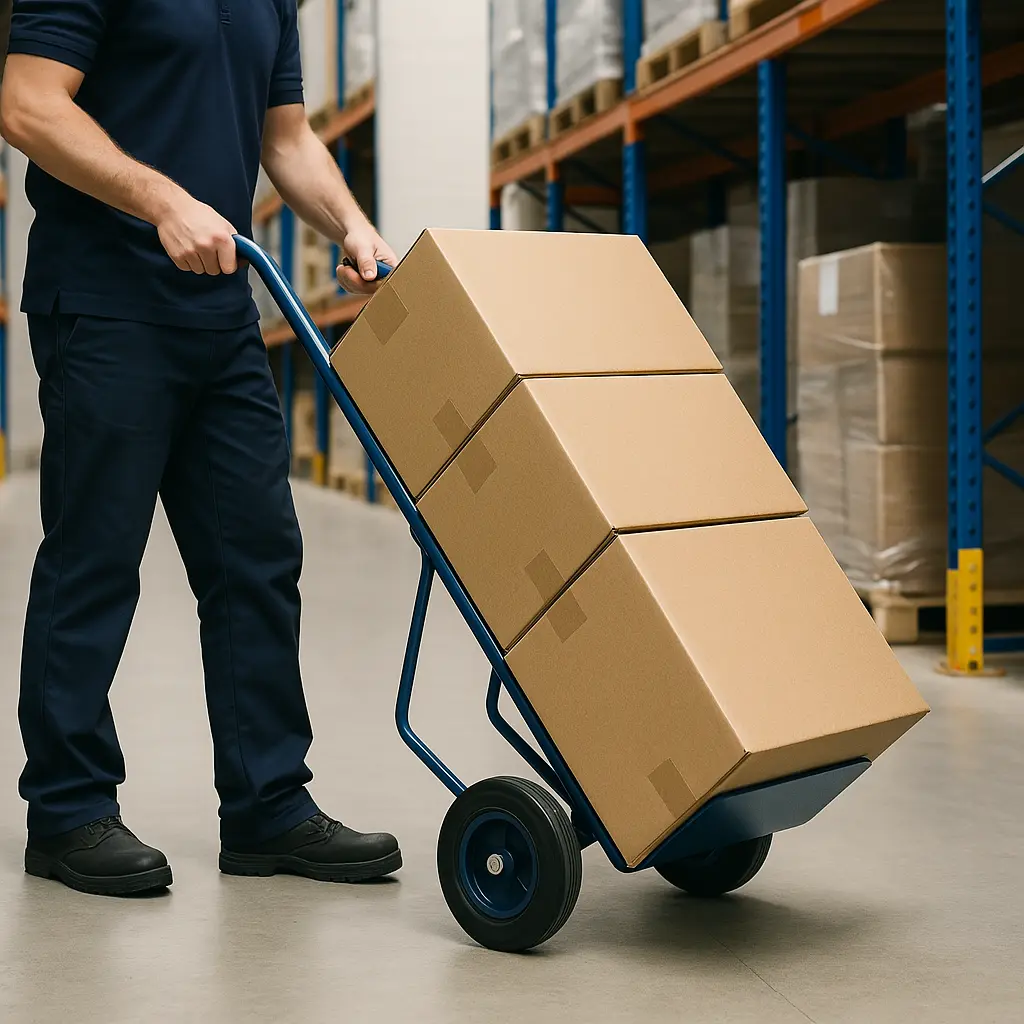
You’ve seen these. They’re L-shaped, stand upright, have two wheels at the bottom, and a little flat plate (the ‘toe’) that slides under stuff. You stack boxes or sacks on it, tilt it back, and roll.
- What they move: Perfect for shifting stacks of boxes, heavy bags, washing machines, fridges, things that are easier to tilt and roll than lift onto a platform. Delivery guys use them all the time.
3. Shelf Trolleys
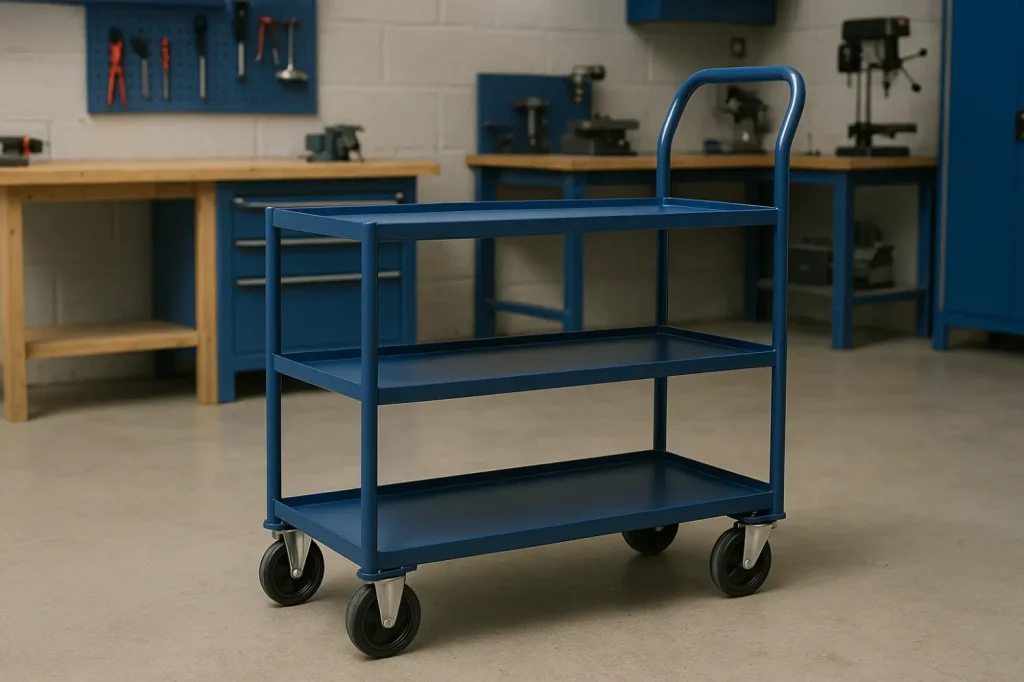
Think of a platform trolley, but with extra levels. Like a rolling bookshelf. Usually two or three shelves, sometimes more, held up by corner posts.
- What they move: Great for smaller things that need organizing – parts bins, tools, paperwork, mail. Good for assembly lines, workshops, libraries, anywhere you need to move lots of smaller items neatly.
4. Cage Trolleys (also Roll Cages or Stock Trolleys)
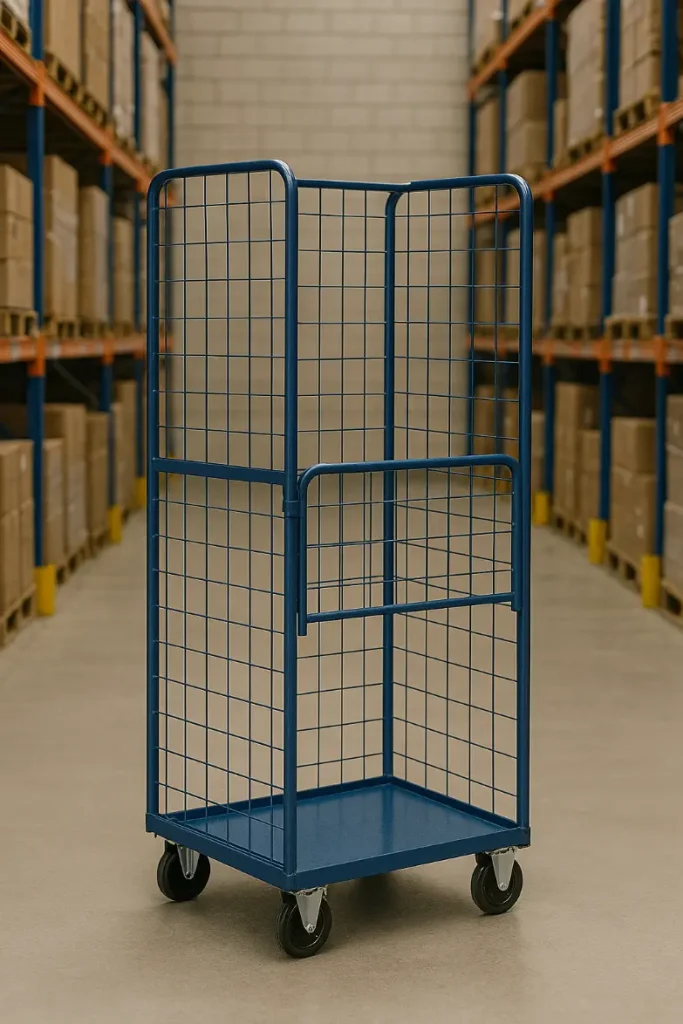
These start with a base like a platform trolley, but they have high sides made of wire mesh or metal bars. Usually one side opens like a gate.
- What they move: Perfect for stuff that might fall off a flat trolley – loose items, lots of small packages, laundry bags, recycling. Keeps everything contained while you move it.
5. Tool Trolleys (Mobile Tool Chests)
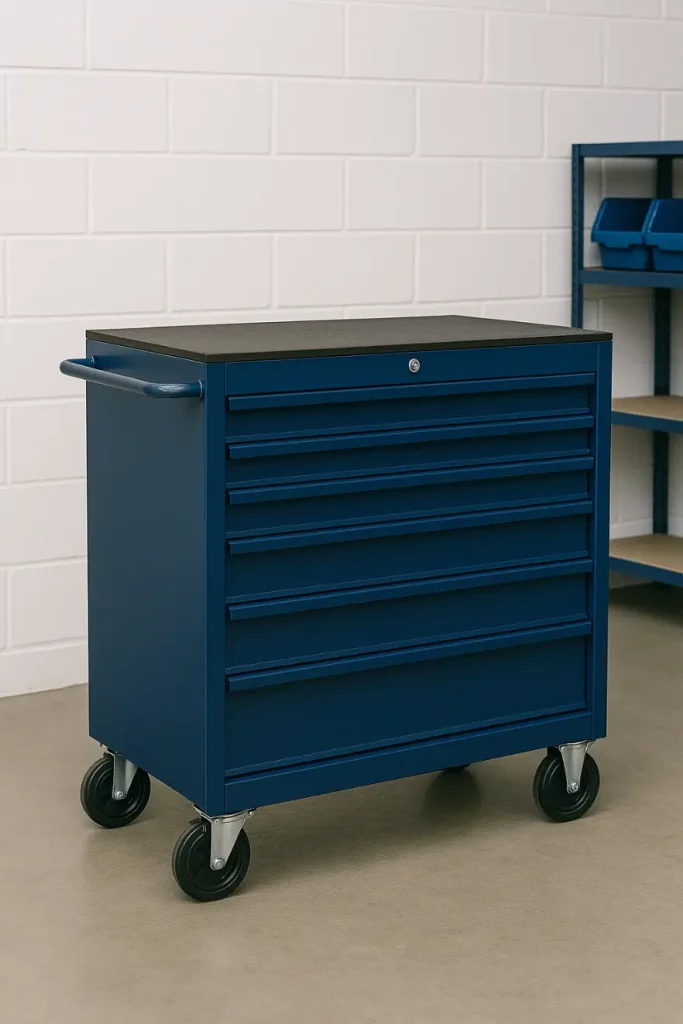
Basically, tool trolleys are heavy-duty toolboxes on wheels. They normally have a flat top (maybe strong enough to work on) and a bunch of drawers or cabinets underneath to keep tools sorted and secure.
- What they move: Tools! Right to where the work is happening in a garage, workshop, or maintenance area. Keeps everything organized and easy to find.
6. Order Picking Trolleys
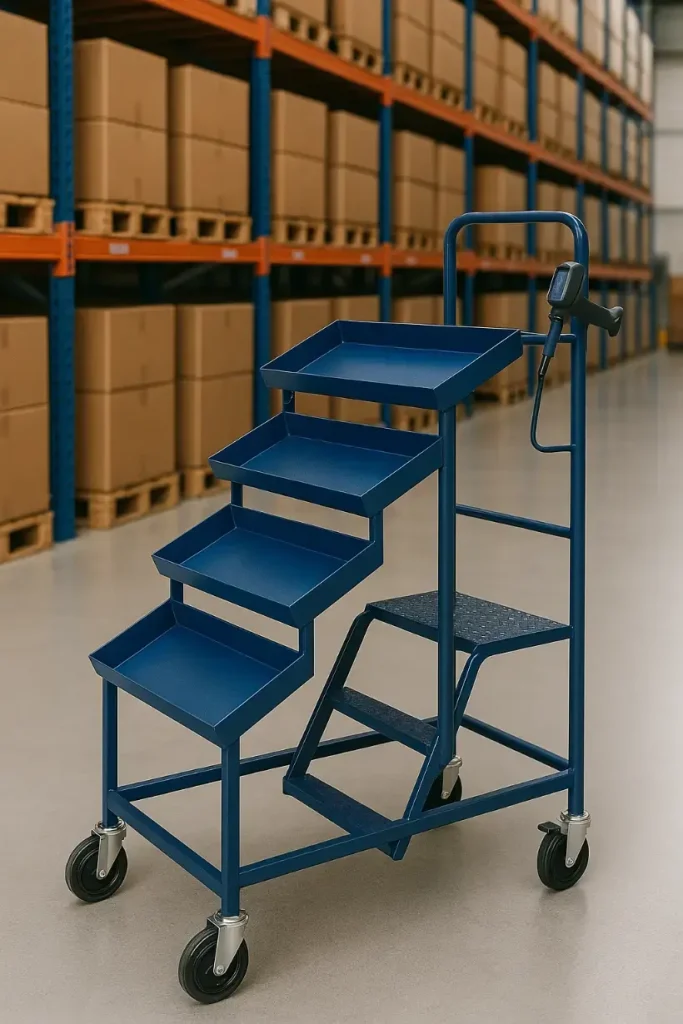
These are designed specifically to help workers in warehouses grab items for customer orders.
- What they move: Items being picked from shelves. The trolley design helps organize the picked goods.
- Features: Often have multiple shelves or bins. Some even have small ladders or steps built in so workers can safely reach higher shelves. Might have spots for scanners or lists too.
7. Panel Carts (Sheet Goods / Plasterboard Trolleys)
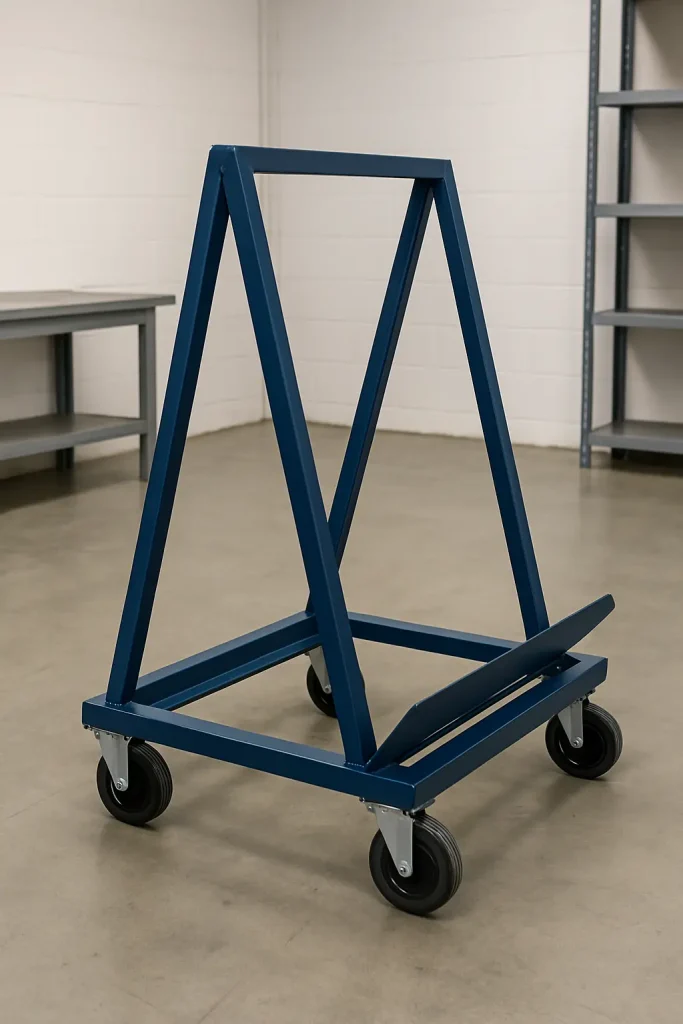
These look different – often upright with a narrow base and angled supports, sometimes like an ‘A’. They’re made to hold big, flat, awkward stuff upright.
- What they move: Sheet materials like plywood, drywall (plasterboard), big pieces of glass, sheet metal, doors, large frames. Makes moving these things much easier and safer.
8. Drum Trolleys / Dollies
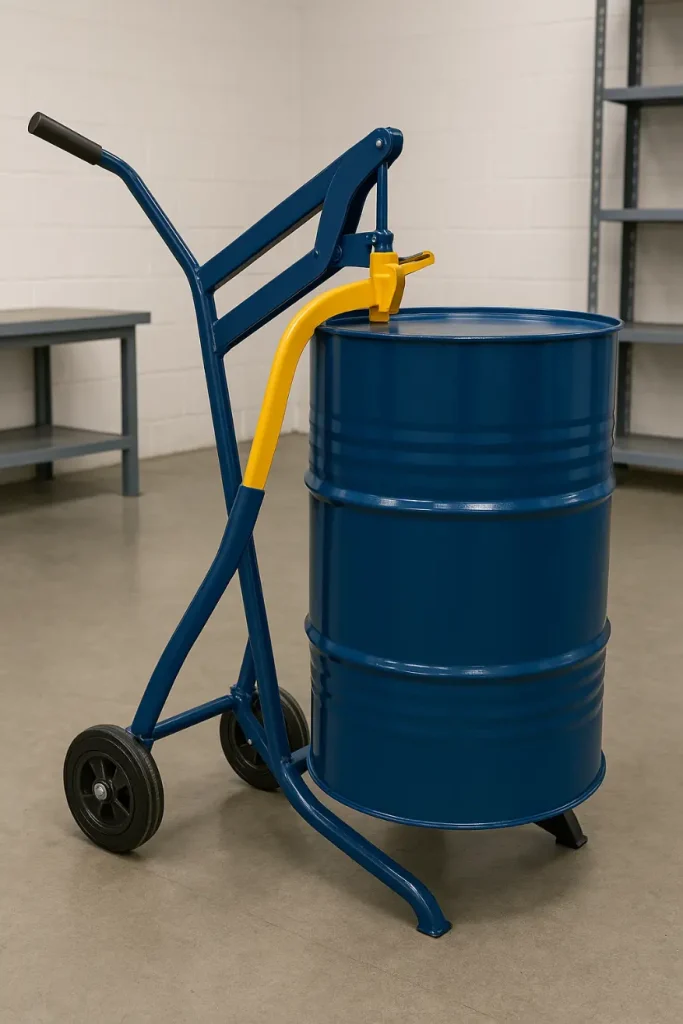
Special gear just for handling those heavy, round 55-gallon drums.
- What they move: Heavy drums, usually full of liquids or other stuff.
- How they work: Some are simple wheeled platforms the drum sits on (‘dollies’). Others are more like hand trucks (‘drum trucks’) that grip the drum and let you tilt and move it safely, reducing spill risks.
9. Cylinder Trolleys

Built specifically to safely move tall, tippy gas cylinders (like oxygen, welding gases, etc.).
- What they move: Compressed gas cylinders.
- Features: Have safety chains or straps to hold the cylinders tight. Crucial for safety anywhere these gases are used.
10. Waste / Bin Trolleys (Tilt Trucks)
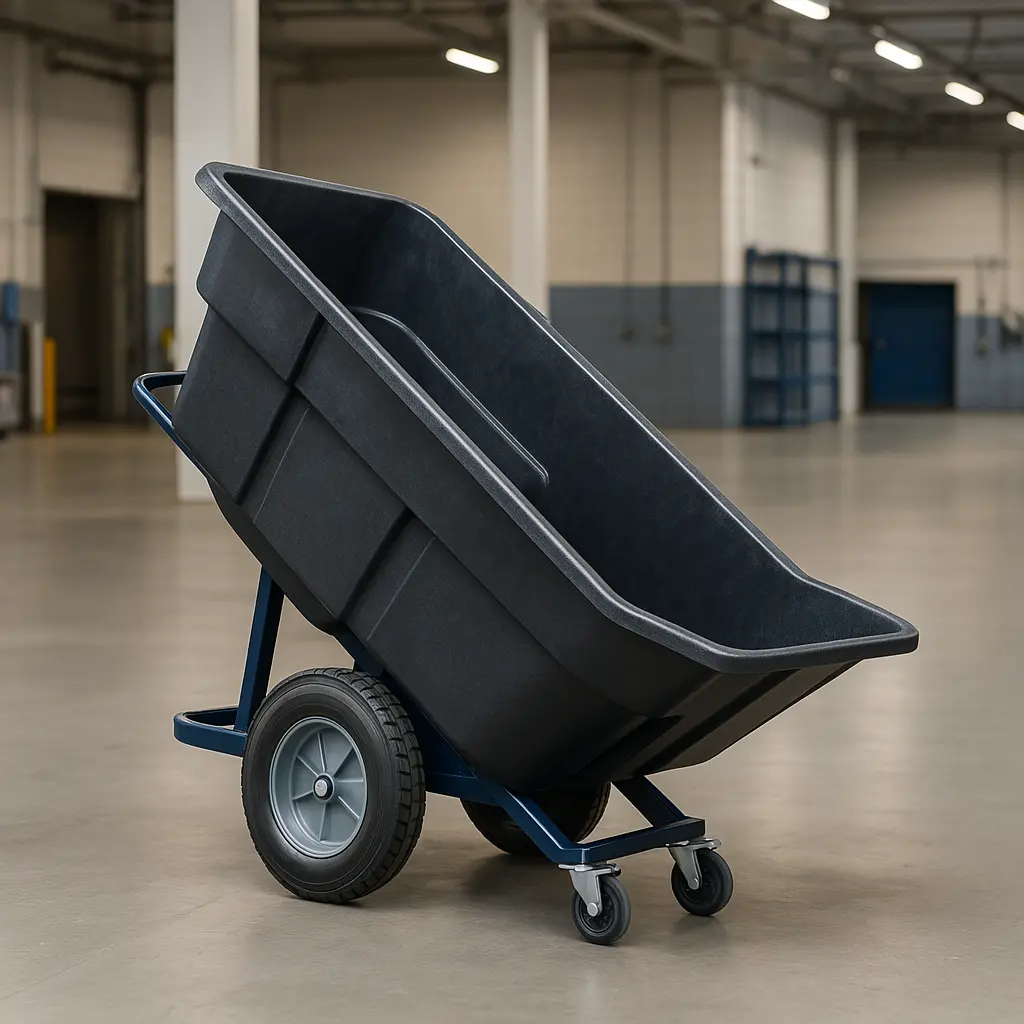
Big bins on wheels! Often designed so you can easily tip them over to dump out the contents.
- What they move: Trash, recycling, scrap metal, bulk materials, sometimes even laundry within a facility.
11. Linen / Laundry Trolleys

You see these in big laundries, hotels, hospitals. Designed for moving lots of fabric.
- What they move: Clean or dirty sheets, towels, uniforms, etc.
- Design: Often look like a metal frame holding a big canvas bag, or sometimes like a tall cage cart. Easy to load and unload fabrics.
12. Utility Carts
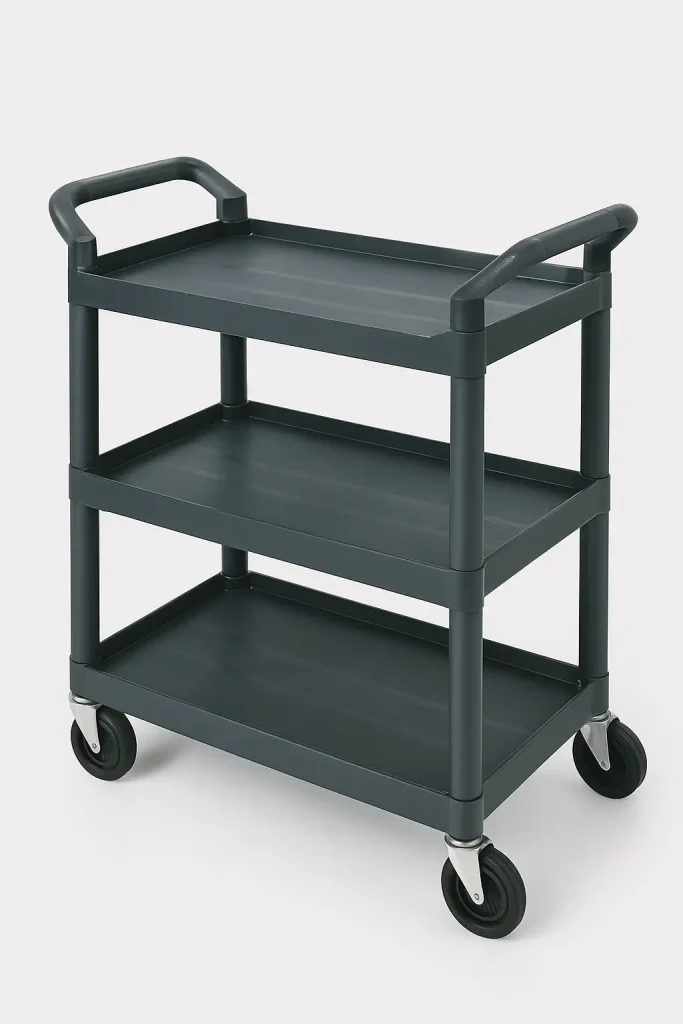
These are the general all-rounders. Often made of tough plastic, maybe metal. Usually have two or three flat shelves with raised edges (lips) to stop things sliding off.
- What they move: Tools, cleaning stuff, small parts, mail, files… pretty much anything relatively light that needs moving around a building. Maintenance crews and janitors use them a lot.
13. Pallet Trucks (Pallet Jacks)
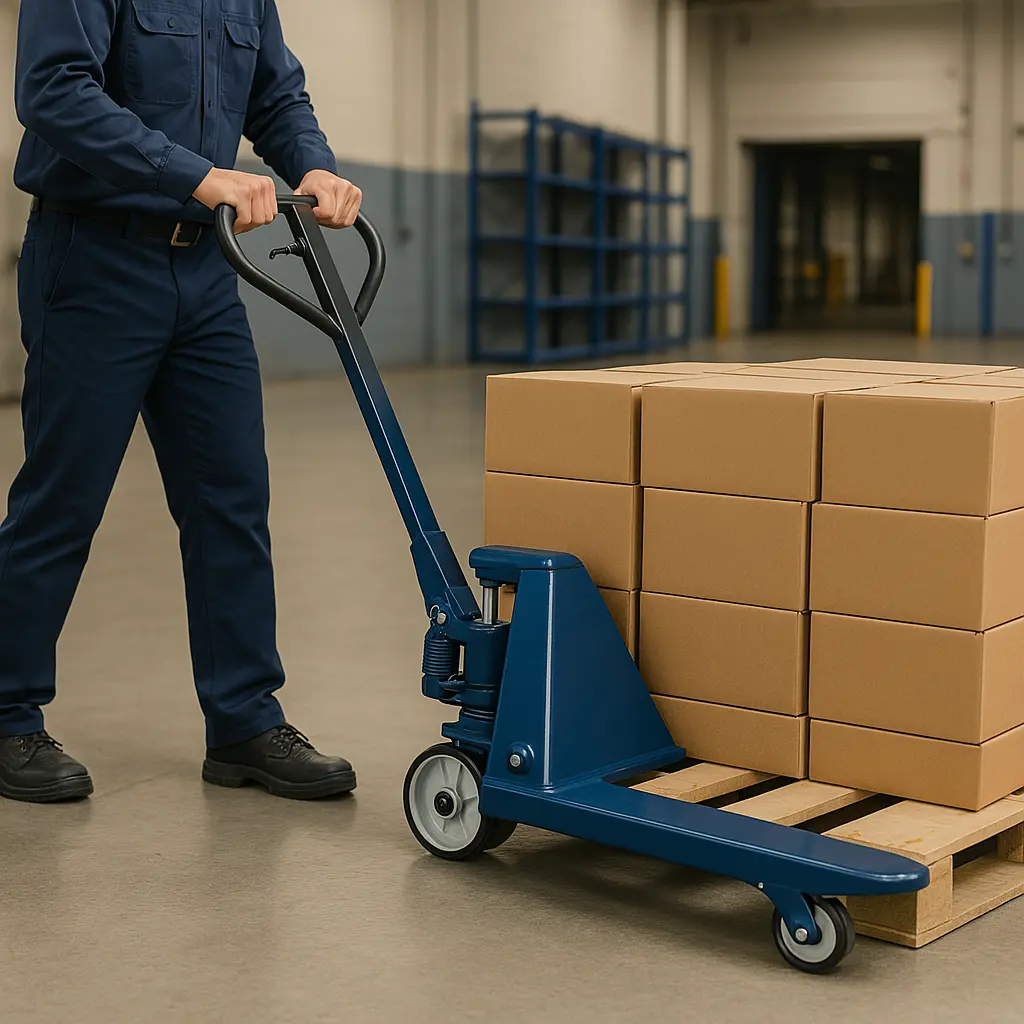
Okay, maybe not always called a ‘trolley’, but they do a vital moving job. They have two forks that slide under a wooden pallet. You pump the handle, it lifts the pallet just off the floor, and you can wheel it around.
- What they move: Pallets loaded with goods. Essential in warehouses, loading docks, delivery trucks.
- Types: Simple manual ones you pump. Electric ones that help you move heavy pallets further or faster. Some even have scales built in.
14. Pipe Trolleys

Made just for carrying long, heavy things like pipes, tubes, or electrical conduit.
- What they move: Long pipes or similar stock.
- Design: Usually have cradles or racks designed to hold the round shape securely and stop them rolling off. Important in construction and related industries.
15. Stair Climbing Trolleys
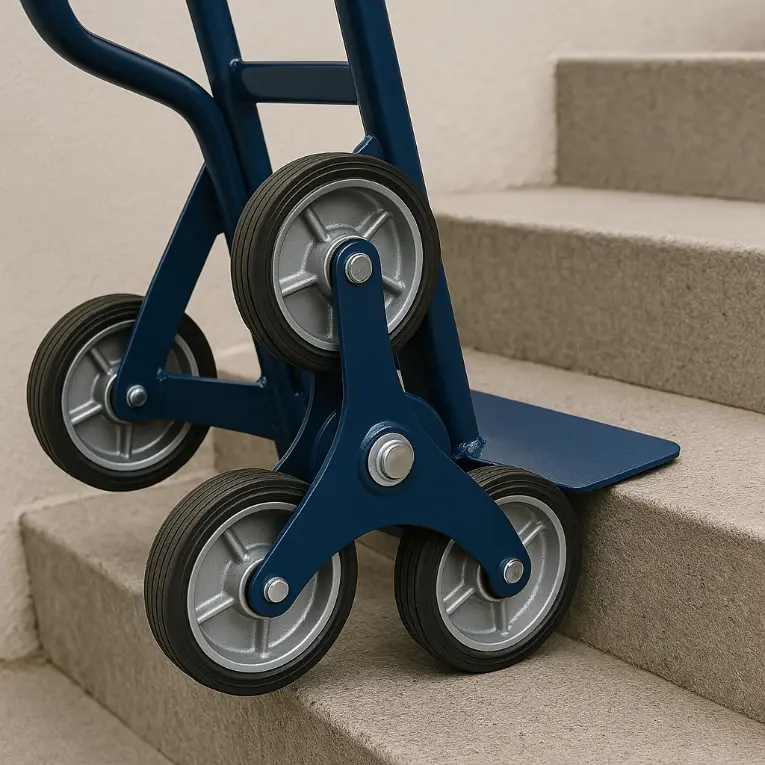
These look like hand trucks but have special wheels – usually sets of three wheels that rotate – letting them ‘climb’ stairs more easily.
- What they move: Heavy boxes, appliances, deliveries up or down stairs when there’s no elevator or ramp. Super handy for delivery folks.
16. Machinery Movers (Skates)
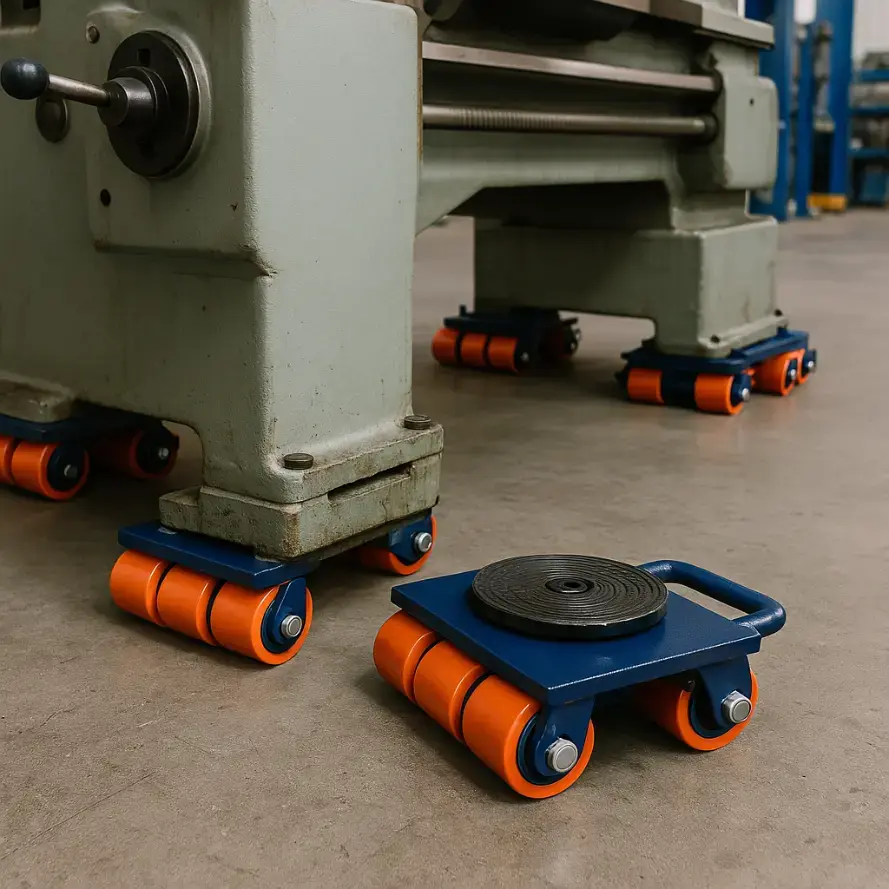
These aren’t really trolleys you push around. They’re small, super strong, low platforms with wheels (like skates) that you place under really heavy stuff like big machines.
- What they move: Heavy industrial machinery, huge cabinets, safes. Used in sets to let you carefully roll massive items across a floor for repositioning.
Picking the Right Trolley: What to Ask Yourself
So many kinds! How do you choose? Think about these things:
- The Load: What exactly are you moving? How big is it? How much does it weigh? Is it loose or packed? Solid or liquid? This narrows down the type of trolley needed more than anything.
- Weight Limit: Check the trolley’s ‘load capacity’. Always pick one that can handle more weight than you plan to put on it. Don’t overload!
- The Place: Where will you use it? Smooth concrete? Rough ground outside? Tight aisles? Up ramps? Over thresholds? This helps decide the best wheel type (hard wheels for smooth floors, air-filled for rougher ground) and the right size trolley.
- How Often?: Will it be used all day, every day, or just once in a while? Heavy use needs tougher construction.
- Easy to Steer?: Need to make sharp turns? Look for trolleys with wheels that swivel easily. Think about how much space it takes up.
- Safety Stuff: Does it need brakes on the wheels? Safety straps? Handles that protect your hands? Rounded corners?
- How It’s Built: For industrial use, steel is usually best for strength. Check how well it’s put together – good welds, strong casters, maybe a powder-coated finish to resist rust.
Bottom Line: Right Trolley = Job Done Right
See? Industrial trolleys are way more varied than you might think. They’re specific tools built for tough jobs. Knowing the different types – from simple platform trolleys to specialized movers for drums or machinery – helps you choose the right one. And picking the right trolley means work gets done faster, easier, and most importantly, safer. Investing in good quality, appropriate trolleys really does make a difference in any industrial setting.



